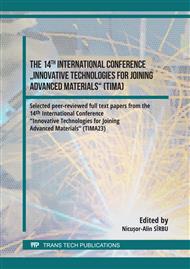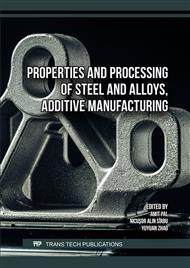p.53
p.61
p.67
p.77
p.87
p.97
p.105
p.117
p.133
Study of Penetration Depth According to Working Parameters in Steel Engraving Using Optical Laser
Abstract:
Laser engraving is a process in which a laser beam is used to mark or cut a material. It is a non-contact process in which the laser energy is focused and directed at the surface of the material, producing a chemical or physical change in the material. The process is fast and accurate and can be used on a wide variety of materials, including wood, metal, glass, plastic, leather, etc. The process has a variety of applications. In the field of moulds, it is used to mark moulds, to engrave company logos and certain informational text, or to engrave certain fine details on the active surface of the mould. In this paper, the use of factorial experiments is proposed to identify the factors that influence the engraving depth.
Info:
Periodical:
Pages:
105-113
Citation:
Online since:
December 2024
Keywords:
Price:
Сopyright:
© 2024 Trans Tech Publications Ltd. All Rights Reserved
Share:
Citation:



